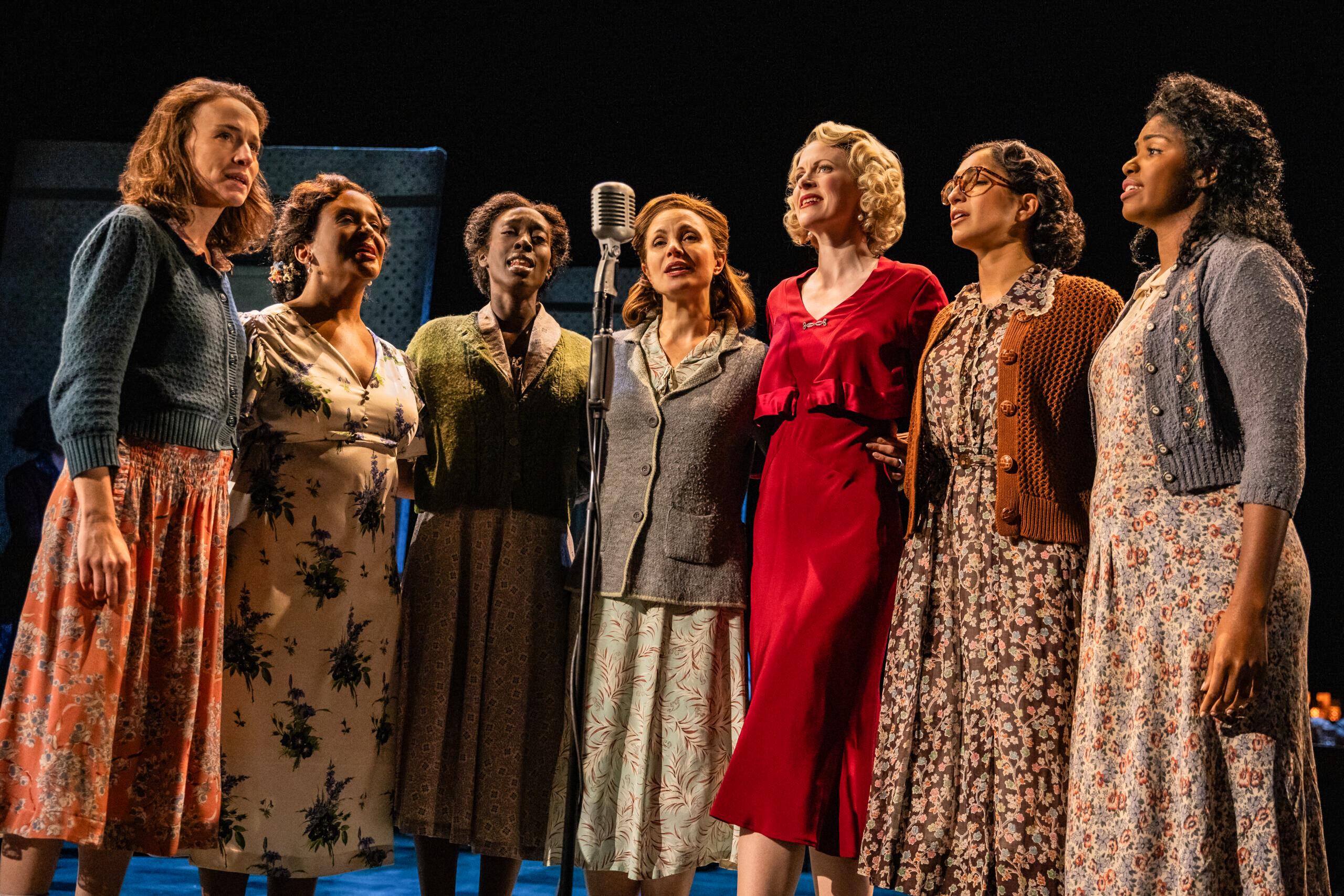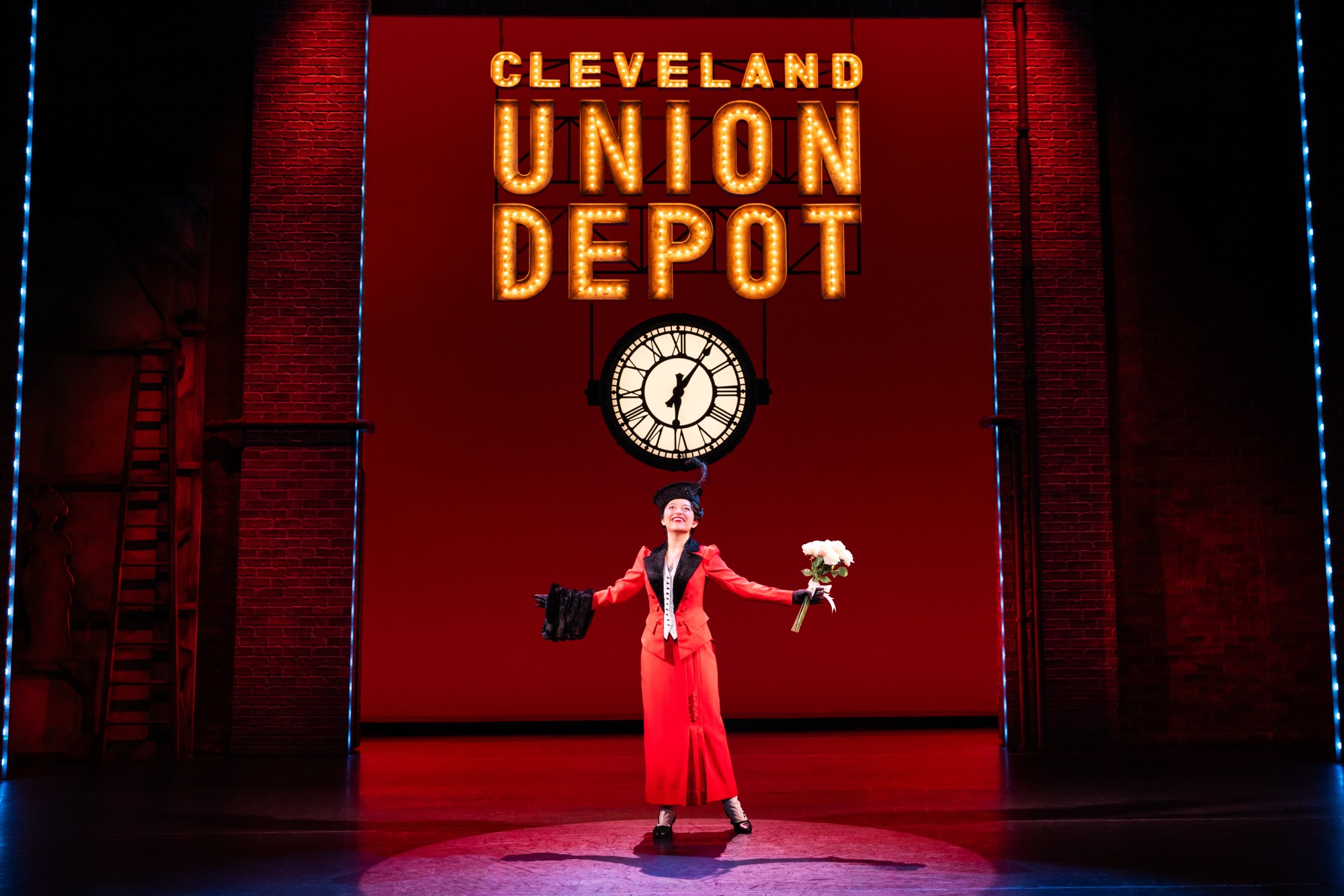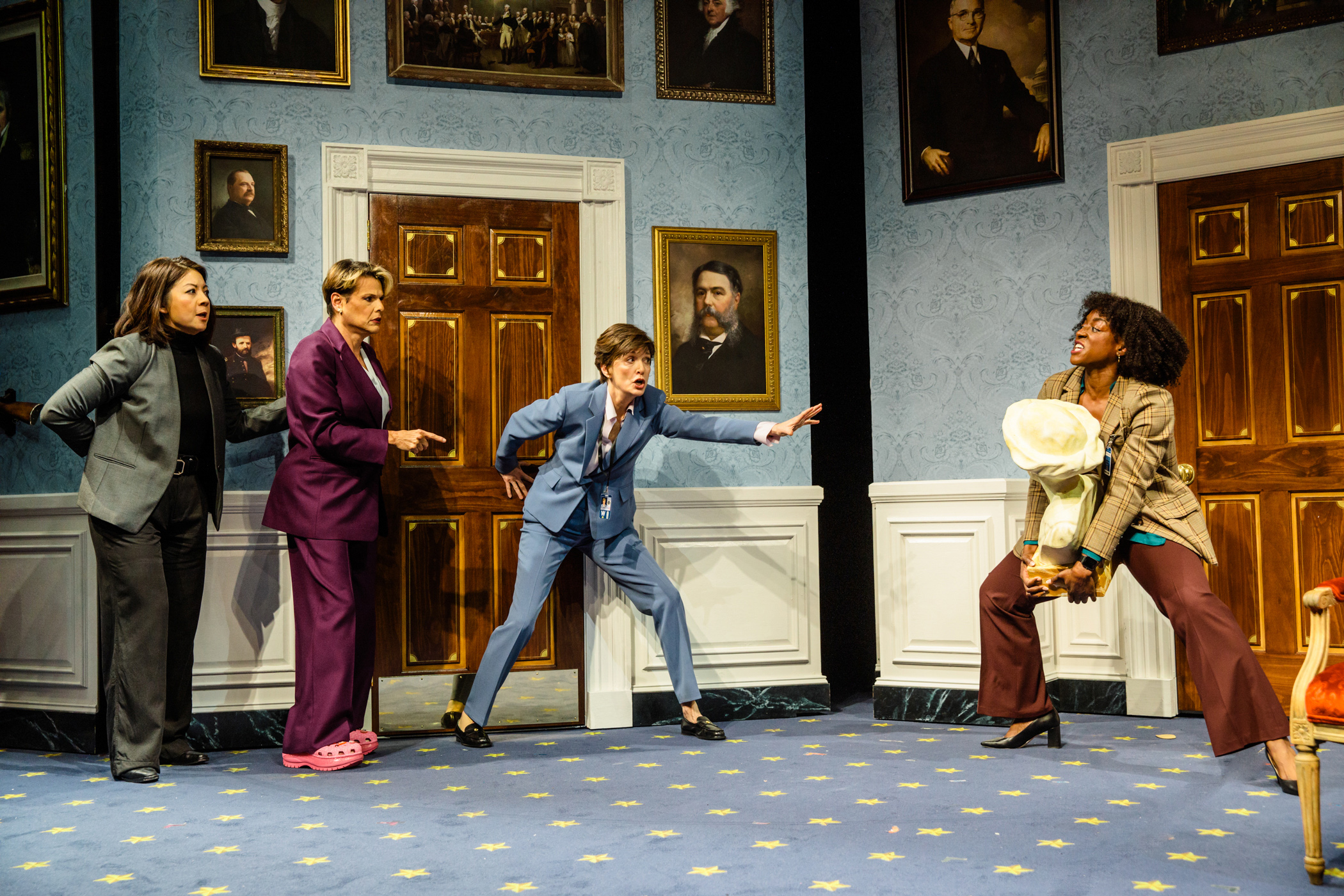Theater Review: Good casting in ‘Girl From the North Country’ saves the show from its cliche plot

The cast of “Girl From the North Country” sings on stage. The Tony Award-winning musical will run at the Hollywood Pantages Theatre through June 2. (Courtesy of Evan Zimmerman for MurphyMade)
"Girl From the North Country"
May 22- June 2
Hollywood Pantages Theatre
$36-$202
By Sydney Gaw
May 22, 2024 7:54 p.m.
“Girl From the North Country” bridges a complex narrative with musical theatrics in their ongoing performances.
Written and directed by Conor McPherson, the Tony-winning musical will run until June 2 at the Hollywood Pantages Theatre. Despite its cliche-riddled plot and lack of narrative originality, the aesthetic sets, poignant musical numbers and stellar cast performances make “Girl From the North Country” a worthwhile endeavor.
Set in 1934 Duluth, Minnesota, on the wintry shores of Lake Superior, “Girl from the North Country” tells the story of Nick Laine (John Schiappa) and the eclectic mix of individuals drawn together by circumstance at his guesthouse. The establishment’s sole proprietor, Nick, struggles to care for his wife, Elizabeth (Jennifer Blood), who suffers from dementia. Meanwhile, Nick tries to secure the futures of his adult son, Gene (Ben Biggers), an aspiring writer, and his adopted daughter, Marianne (Sharaé Moultrie), who is pregnant and unmarried. When the bank threatens to foreclose on the property, Nick grapples with the pressure to do what’s best for his family and guests. The ragtag cast of characters and their complicated personal problems weave a complex tapestry of life stories that are only observed in passing, ultimately fixating on a portrait of an America steeped in financial crisis.
The musical derives its 22-track score from the catalog of Bob Dylan. The show opens with a lively rendition of “Sign on the Window,” which effectively sets the mood for a Depression-era story with hints of optimism. One of the performance’s most immersive elements is the use of instruments on stage. While one woman, who is later introduced as Mrs. Burke, holds the beat on a drum set stage left, Gene plays the piano melody stage right. Once the musical number is over, the instruments fade back seamlessly into the set until the next number.
[Related:Second Take: Broadway must ditch musical film adaptations for original stories]
Among the cast ensemble are standouts Moultrie, whose vocals infuse Dylan’s songs with raw vulnerability, Blood, whopoignantly conveys Elizabeth’s struggle to maintain her sense of self, and Matt Manuel, whose physicality onstage embodies the humility and determination of Joe Scott. Alan Ariano also carries the show with his earnest narration and performance as Dr. Walker.
However, as the story unfolded, the plot became muddled with cliches and unconvincing storylines. Among them: the seemingly random death of the Burkes’ mentally disabled son, Elias Burke (Aidan Wharton), who presumably drowns during a Thanksgiving storm when the emotionally absent Mr. Burke (David Benoit) forgets his responsibility to watch Elias; the alcoholic-and-unemployed-writer character archetype of Gene; and Nick’s affair with a widowed resident, Mrs. Neilsen (Carla Woods). Character love stories feel underdeveloped, with none reaching an emotional climax where audience members can either experience the tragedy of unrequited love or the triumph of fidelity over an affair.
Additionally, the musical’s attempts to address social issues tied to race and gender feels clunky and disjointed when characters’ allusions to these important topics are left unresolved at moments where the characters’ actions could have spoken for themselves. The writer’s efforts to acknowledge the racism and sexism characteristic of the historical period could have been more tastefully executed by fleshing out the dialogue revolving around Joe Scott’s wrongful conviction or allocating more time to explore Marriane’s struggle to resist social expectations for unmarried pregnant women. In both of these instances, the story explicitly calls attention to the aspects of these characters’ identities that marginalize them without touching on the ways in which these details are relevant to the story or depicting how they have shaped Joe Scott or Marriane’s character developments.
[Related: Theater review: Immersive set-building enables ‘The Hope Theory’ to connect with viewers]
From a broader standpoint, the story’s dialogue and pacing kept viewers engaged. Actors delivered lines with perfect comedic timing, and, with the exception of a few hackneyed punchlines, the writing was humorous when it needed to be.
The musical numbers showcased a broad range of vocal skill combined with an artful interpretation of staging and choreography. Though some of the performances suffered from an awkward or abrupt transition from dialogue to singing and dancing, most of Dylan’s compositions fit cohesively into the storyline.
Although the plot could have been more narratively complex, the cast of“Girl from the North Country” demonstrates that quality execution can certainly uplift a lackluster story.




